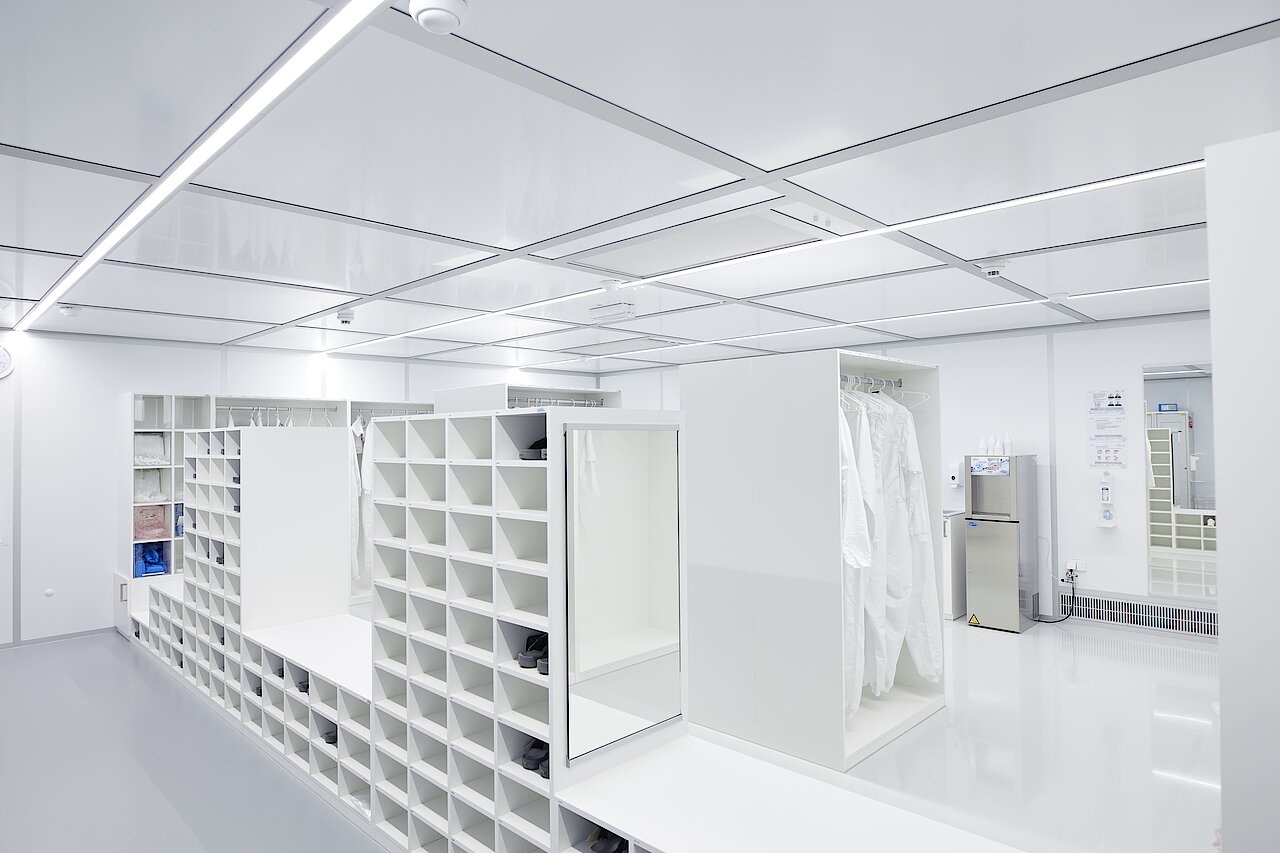Melamine furniture for ISO cleanrooms
Furniture with a melamine resin coating has proven its worth for equipping ISO class cleanroom airlocks. The coating consists of a layer of paper impregnated with the synthetic resin melamine, which is pressed onto a chipboard substrate. The visible edges are glued from plastic.
Melamine forms a smooth, scratch-resistant and water-repellent surface that is easy to clean. The material is available in various colors, is easy to process and is inexpensive.
Materials for use in GMP cleanrooms
GMP cleanrooms have even higher requirements for the quality of the furniture, which is why melamine furniture reaches its limits here. The melamine surface is not resistant to many cleaning agents and disinfectants used in GMP cleanrooms. In addition, a lot of moisture (wet wiping and disinfection) can cause the furniture to swell. Melamine also has some weaknesses in terms of impact resistance and heat resistance.
- Stainless steel and HPL
Stainless steel or HPL are usually used for furniture in GMP cleanrooms. HPL stands for High Pressure Laminate and refers to laminate panels that consist of several layers of paper or plastic that are pressed with resins under high pressure and high temperature.
HPL and stainless steel are robust and hard-wearing materials that are resistant to scratches, impacts, moisture and many chemicals. In addition to their high weight, they have one major disadvantage: they are expensive.
- Duplex as a cost-effective alternative
In the search for more cost-effective materials that are suitable for use in GMP cleanrooms, we tested a so-called duplex coating. As with melamine furniture, resin-impregnated papers are pressed onto chipboard. The decisive difference is the number of paper layers in the two-sheet structure. In addition, the boards are sealed all around with PP edges. Thanks to this construction method, the furniture is permanently water-resistant and has very good chemical resistance. The material can therefore be used without hesitation in GMP cleanrooms and offers a functional and cost-effective alternative that has already proven itself in use.
Sounds too good to be true? We think that every now and then you have to break old patterns of thinking and look for new ways. Because sometimes less is not worse.
